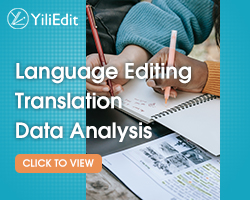The Impact of Blended Learning in a Lower Primary Education: in the Case of the Second Chance (SC) Education Program in Emanuel Development Association (EDA)-Ethiopia
Keywords:
listening comprehension, audio, video, captioned videoAbstract
The purpose of this action research project was to determine if teaching with a blended learning approach increases student engagement in Second Chance (SC) primary school classrooms. Participants were nine to fourteen-year-olds with individualized education plans and general education in a full-day school program. Students came from a wide variety of backgrounds and different socio-economic backgrounds. Quantitative data was collected through observation by recording which students were actively engaged, passively engaged, disengaged, or disruptive in small group self-learning for ten months a year, seven hours a day, and six days a week. Qualitative data were collected through observations by the teacher/facilitators and para-educator, interviews with students, and journal notes. The SC classes run for ten months, teaching 25 students per class with an intensive calendar to be determined in consultation with the parents of the children. The teaching/learning process employs interactive learner-centered methods with an emphasis on basic literacy and numeracy. Learning progress will be assessed through continuous assessment and reinforcement measures. On the other hand, social and emotional learning is fully applied to the cognitive development of the children to perform better academically and ensure soft skills, such as interpersonal, intrapersonal, and communication skills. After completing the SC condensed curriculum, students will seat for a standardized placement test prepared and administered by the local government education sector to determine appropriate grades. For example, the placement test clearly determines the grade level of the students. According to the assessment report the students were promoted to grade three, or four based on the assessment results. However, the traditional classes should follow the yearly promotion method from grade one, two, three, and four approaches. According to (Weir and Knight, 2004), while the economics of education encompasses both theoretical and applied aspects, applied work has become more and more important over time. Being Ethiopian is a developing nation the effectiveness of the Second Chance program completing grade three or four in ten months of teaching could practically justify the economics of education to address the majority of out-of-school children in Ethiopia. This article is a descriptive analysis of an innovative blended learning Second Chance education program and also aims to contribute to the discussion and literature on the changing Taxonomy of Education and developing learning models that could help students engage with their learning in deeper, more interactive, flexible, social, and contextual ways. Learning is disseminated in the classroom by using locally available teaching aid materials and TV, and radio that makes the program hybrid and blended learning. The blended learning models provide supplementarily and augmented education for those with time and access opportunity disadvantages. The teaching approach not only supports the teaching of 21st-century skills but also offers tools for both the fast assessment process and remedial education. Moreover, the teaching-learning process is multiple, integrated, diversified, interactive, and learner-centered teaching approach increases students’ engagement and improves their academic performance of students. The approach is also activity-based, flexible, social, and contextual to make learning real. The foundational beliefs of conventional instruction hinge on uniformity, a community tradition, transition qualification and compliance to requirements relating to schooling, and percentage of in-person attendance with cohort. Although blended learning is taking place by using locally available teaching aid materials, where the school dropout students from 9 to 14 years old who came from different life skills experiences. Students are more encouraged and motivated to learn by practices in the class. The role of the teacher is to facilitate the teaching and learning process in the classrooms and out of the classroom. The project is successful and replicated by the government schools in the above-mentioned regions. The SC program runs for ten months and is intended to address out-of-school children in the school system through standardized placement tests prepared and administered by the local government education sector to determine appropriate grades, for example, grade three, or four to which the children be promoted, based on the assessment results. According to the report, more than 90% of the SC students transferred to grade four after the ten months of intervention in the target schools.
Downloads
Published
Issue
Section
License
Copyright (c) 2024 The Author(s)

This work is licensed under a Creative Commons Attribution 4.0 International License.




